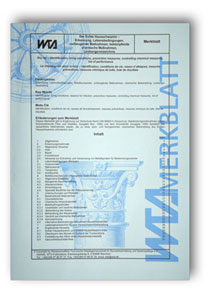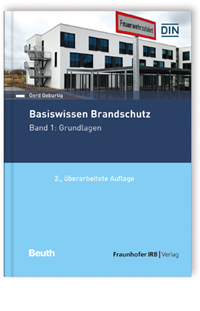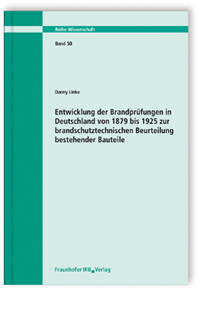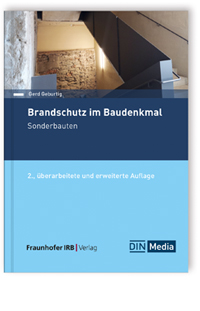Fire protection in the existing building and for architectural monuments according to WTA III: fire protection planning (E-Book (PDF-Datei))
Technical commission 11 Fire Protection
WTA Guideline 11-3-23/E. English version from April 2023
Details zum Merkblatt
Reihe
WTA-Merkblätter , 11-3-23/E
Erscheinungsjahr
2024
Stand
04 / 2023
Herausgeber
International Association for Science and Technology of Building Maintenance and Monuments Preservation -WTA-
Bibliografische Angaben
11 Seiten, 1 illus.
E-Book
Fraunhofer IRB Verlag
ISBN 9783738809367
Sprache
Englisch
On the basis of WTA guidelines 11-1 and 11-2, this guideline provides information with reference to the fire protection planning phases for an appropriate approach to fire protection planning for existing buildings and historical monuments.
Fire protection planning enables the conversion or continued use of existing buildings, in addition to the conservation of so-called grey energy, that is the generation of waste in the construction industry is avoided and the amount of primary energy to be expended for constructing new buildings is avoided.
The compatibility of fire protection planning with existing buildings thus plays a special role, because it enables resources to be conserved in the building sector by means of substance-preserving preventive fire protection and comprehensive preservation of the existing building components. The requirements specific to existing buildings are described on the basis of the usual service phases in fire protection planning.
In the case of listed buildings, sufficient consideration must be given to the legal requirements for listed buildings during fire protection planning. In this respect, it is important to preserve the components of a building, which must necessarily be preserved authentically, as far as possible without adding any ingredients, on the basis of a monument preservation objective.
In the case of changes of use, additional aspects of the assessment of the either continued or interrupted protection of existing buildings must be taken into account. Zur deutschen Fassung
Fire protection planning enables the conversion or continued use of existing buildings, in addition to the conservation of so-called grey energy, that is the generation of waste in the construction industry is avoided and the amount of primary energy to be expended for constructing new buildings is avoided.
The compatibility of fire protection planning with existing buildings thus plays a special role, because it enables resources to be conserved in the building sector by means of substance-preserving preventive fire protection and comprehensive preservation of the existing building components. The requirements specific to existing buildings are described on the basis of the usual service phases in fire protection planning.
In the case of listed buildings, sufficient consideration must be given to the legal requirements for listed buildings during fire protection planning. In this respect, it is important to preserve the components of a building, which must necessarily be preserved authentically, as far as possible without adding any ingredients, on the basis of a monument preservation objective.
In the case of changes of use, additional aspects of the assessment of the either continued or interrupted protection of existing buildings must be taken into account. Zur deutschen Fassung
From the content:
- Analysis and adoption of analysis results
-
- General
- Integration of standing building survey in fire protection planning
- Fire protection planning stages
-
- General
- Basic assessment
- Concept design
- Developed design
- Planning approval design
- Detailed design
- Preparation for and participation in contract award
- Site supervision
- Project documentation
- Integration of fire engineering procedures
-
- Engineering procedures to DIN 18009-1
- Application of DIN 18009-1 to existing buildings
- Updating of fire protection planning
- Verifications for construction phase and interim concepts
-
- Fire precautions for site operations
- Interim concepts for construction phase or uses concurrent with construction phase




